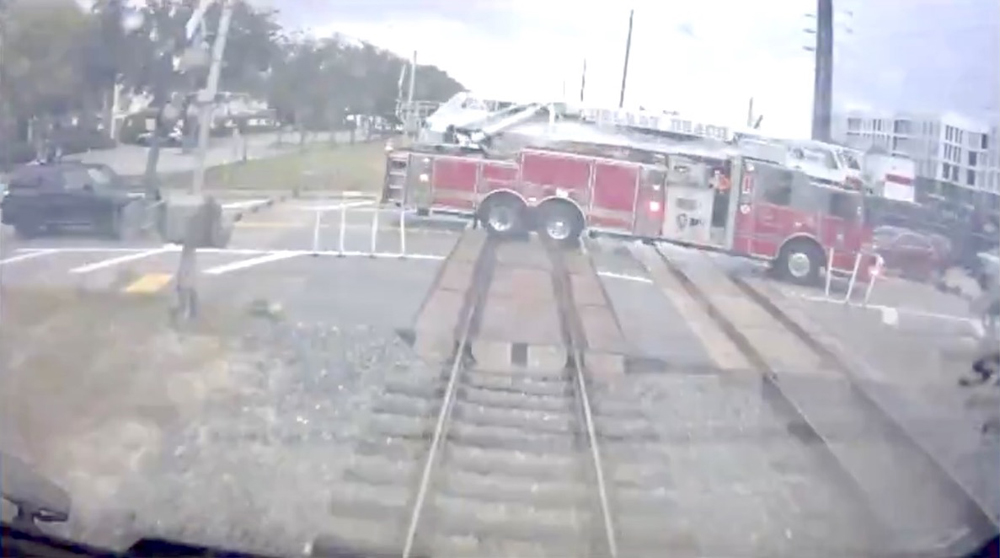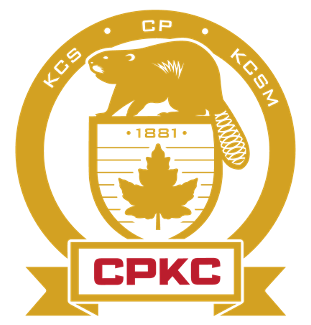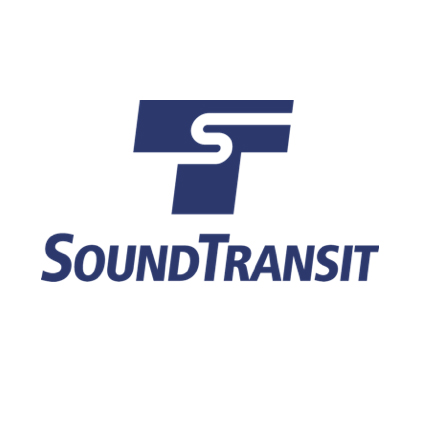Both companies provide services in intermodal, trucking, and supply chain management.
Hub Group and Schneider saw intermodal revenue increases despite lower volumes. Both experienced railroad lane closures, weather disruptions, and more intense truck competition.
Despite second quarter problems, Schneider last week announced new intermodal service at its BNSF Railway ramp in Barstow, Calif.
Hub Group, with 1% more revenue on a 7% volume decrease, cited a soft freight market and increased intermodal competition, but its officials expressed optimism.
“The good news is that the volume declines have flattened,” says David P. Yeager, Hub Group CEO, “And we expect to continue to see sequential improvement through the second half of the year.”
“I just heard the June results of [the Index of] Consumer Sentiment was through the roof again,” Yeager says. “And consumers drive an awful lot of this economy.”
Despite a 12% revenue increase on volume growth of 2%, officials with Schneider were not as optimistic.
“It’s a little murky from our standpoint what the whole trade discord is going to deliver in the second half of the year,” says Schneider CEO Mark Rourke. “Intermodal is more influenced by Asian and international imports than the rest of our business.”
Despite uncertainties, Schneider announced its new intermodal service out of Barstow is aimed at shippers in southeastern California, Las Vegas, and western Arizona.
Besides pricing, five-day transit times from Barstow to Chicago are designed to be competitive with trucks, officials say.
“San Bernardino has experienced a lot of growth in recent years, creating capacity issues for shippers in the region,” says Jim Filter, who heads Schneider’s intermodal division.
In the wake of growing applications of Precision Scheduled Railroading, Rourke says Schneider is talking with railroads about increasing intermodal capacity.
“I think we’re seeing a bit more dialogue with some of the railroads relative to finding ways that they can certainly achieve their objectives that they’re going after on running an effective railroad but also looking for those areas where additional volume may be able to be secured on the train,” he says.
Hub Group is pleased with rail service it is receiving.
“Rail service has improved dramatically,” says Yeager. While Union Pacific’s performance showed substantial improvement, Norfolk Southern’s was at “record levels,” he says.
Another major intermodal player, J.B. Hunt, earlier in July cited similar intermodal problems as those of Hub Group and Schneider, noting that lane cancellations in the East stemmed from applications of PSR.
Like Hub Group, Hunt officials expressed optimism for intermodal in the second half of 2019 and have given modest praise to railroad performance.
As of July 30, intermodal volume was described as “weak,” down by 2.5% from the previous year, according to Rick LaGore, writing for InTek Freight and Logistics.
Overall second quarter intermodal was down by 8%, says Terri Pizzuto, Hub Group’s chief financial officer.
Excess truck capacity resulted in lower truckload rates, which eroded intermodal’s competitive price advantage, prompting shippers to switch from intermodal to truckload, Hub Group officials say.
Hub Group announced net income of $29.2 million on second quarter revenues of $921.2 million.
Schneider’s net income was $49.2 million from revenues of $1.2 billion and the company announced it will close its “final mile” business of making consumer and business deliveries of furniture, carpet, and appliances.














It could be done, but some serious attack on capacity issues would have to be resolved. An investment in additional interlockers allowing more crossovers to move against traffic could be done safely particularly now that PTC is in service. As far as I am concerned, the railroads should share more route miles to put slower bulk trains on one route and fast intermodal of special commodity trains on another route along with any Amtrak trains. The average speed of a freight train is still too slow for most freight traffic today. Too, the railroads had better learn to compete more with trucks since a lot of bulk freight is diminishing for good.
I guess if I walked out the door as soon as I got my paperwork, jumped on the train, departed and it accelerated like a truck, had clear sailing, ran around everything in front of me, held opposing traffic coming the other way on double track so I could use that segment to run around the slower stuff, then ya maybe I could. But then, to guys like Mark, Chris, and myself, there is the real world of railroading we deal with every day.
I was working the road when UP tried the 79mph “Super Chicken” a number of years ago. They were already parking trains miles in advance across Iillinois and Iowa to see if they could get this experiment from Chicago to Omaha without stopping. I cant remember how many crews were killed of that night for the sake of one train.
Can it be done? Ya probably, but with very little wiggle room for delay, and at what cost to the other trains out there?
Also, just because a train is intermodal doesn’t mean it’s a premium train. And Braden, if you could see the trip plans for any intermodal like can, I think you would be surprised. And why do they seem low? Because I think even the railroads are aware that things happen.
The UP route to the Bay from Chicago has 4 districts over 300 miles and one close to it.
But the rub is that apart from the route (or route segment) exceptions I mentioned, the capacity improvements required are very expensive. And let’s include intermodal ramp capacity as well assuming ramp-to-ramp velocity can be improved enough to allow more “long pools” to reduce crew costs enough to generate more customer demand. The fact that IM is low margin doesn’t help justify the expense.
And this goes far beyond extending sidings and yard leads (which are expensive enough but benefit all traffic). Examples: the curvy and speed limited Crescent Corridor in VA and Tennessee. Or the incomplete double tracking of the Bakersfield-Mojave route over Tehachapi, which manages to be a successful IM artery for BNSF because all of the lanes that traverse it are long distance. For the UP I-5 Corridor it’s barely competitive (maybe it can be argued “uncompetitive” not only because the lanes it supports are shorter (but not “short”) but also because Tehachapi is only one of many stretches of slow and expensive mountain railroading between LA and Portland.
Braden Kayganich – I failed reading 101??? You see? Where? Let me re-read your comment again…….yes, just as I suspected…..nothing wrong with my reading comprehension. You never once stated in your initial ramble anything about capacity. Nothing. If you wanted to talk about capacity, you failed to mention it initially. Your rebuttal appears to be nothing more than an attempt at backpedaling your way out of an embarrassing statement. It’s not working. Now, having said that, let’s chat about what you thought you were talking about. Capacity. It’s an extremely limited subject. Railroads have only so much capacity. When they exceed that, things grind to a halt & quick. This applies to all modes of transportation, really & the trucks have no real edge as they’re restricted to our already congested highway system. In an effort to get blood from a stone, many railroads are employing Hunter Harrison’s signature PSR principles to their operations. Train lengths have doubled & even tripled in an attempt to run the same freight with less crews. Yards are being redesigned, expanded & some even closed altogether. Clearly someone is working hard at chipping away the stumbling blocks you speak of. Take note…..& stay in the shallow end of the pool, my friend…….
Thanks Paul for your response it’s sincerely appreciated
Braden – “effeminate”??? Do yourself a favor & google word definitions before pounding them out on your keyboard. There isn’t anything remotely effeminate, by definition, in my comment to you. Explain to me how trucks will “always have an edge regardless of congestion”. Your scenario of a 500+ mile run or better on 11 hours of service brings the customer what? Let’s say we’re using the standard 53′ van trailer. Subtract the tare from the gross & what’ve you got? Maybe 38,000 lbs. of freight? Please. How many gallons of diesel moved that unimpressive figure of freight weight? Compare that to the real tonnage movers that the railroads are. Two crew members & a lot less fuel are going to move the same amount of freight that hundreds of semi trucks & hundreds of truck drivers are going to move. Where’s the edge? The rail industry boasts the ability to move one ton of cargo 436 miles on a gallon of gas. This may seem far fetched, but the experts agree that this number is fairly accurate. Where’s the edge? If your needs are shipping something in the 30 to 40 thousand pound capacity & you need it in 11 hours, then….yes….hire a truck. If it’s bulk, the railroad’s specialty, and you’ve got a little bigger time window, the railroad can’t be beat. It’s math. Now….please take Steve Sweeney’s advice, my friend & refrain from the name calling. Keep it a little civil here. As I look at your comments I see “ignorant”, “lack of comprehension”, “inability to comprehend” & the latest “effeminate” charge. Quite simply….grow up. If my calling your comment “embarrassing” sets you off into a rage, you need help. Seriously. There’s nothing wrong with a healthy debate….but when all you’ve got left is name calling……the debate is over.
Braden is closer to the mark than some of you think. BNSF runs a “long pool” on the southern transcon between Belen, NM and Amarillo. That’s 332 miles on the highway via Clovis, which is pretty close to the RR miles. Yes these crews die on HOS sometimes from what I read, so 450-500 miles are likely an unrealistic stretch goal.
Though I often wonder what fraction of crew time is actually spent running the train after being released from the departing terminal and whether the nonproductive remainder can be reduced in some material way. I’m assuming there isn’t a lot of time waiting for opposing or even overtaking meets on the southern transcon, and similarly no waiting for PSR land barges doing intermediate work to clear en route.
But the general point Braden is making is valuable. I think if every IM lane was composed solely or even mostly of 325 mile fast running long pool segments like this one, the railroads would be very happy with the cost savings, and if they could reliably schedule keep on such segments the resulting velocity would make customers very happy with the service. So I agree with Steve’s comment, Braden didn’t deserve the ridicule and probably he didn’t need to respond defensively to it given the tone.
I would venture that the BNSF southern transcon might be the only set of crew districts that come close to qualifying. Again maybe CSX Chicago-Selkirk or NS Chicago-Harrisburg. Any others I’m missing?
My apologies Mr Sweeney. I’ll stop feeding the trolls.
Let’s show each other more respect in here, please.
@Mark Kaspar
Weren’t you speaking on operations inexperience? I don’t need to mention capacity.. Since you’re the guru right? Matter of fact you would’ve picked up on that when I stated my opinion that TnE crews should have no problem getting 450-500 miles.. Instead of your effeminate response..Who’s in the shallow end? Trucks always will have an edge regardless of congestion. We can still manage to get a rig 500+ miles or better on 11hrs HOS with delays in ATL, LA, DFW etc.. I still stick by my opinion that 450-500 miles is were they need to get to..and can be done..
Intermodal needs higher average velocity and crews running 450-500+ miles per districts . TnE crew’s should not have a problem covering this. Too many crew changes on the RR’s thats the cost factor that should be analyzed… Prime example..A premium train service running Chicago to NY should only be changing crews one time..
@Mark Kaspar
You failed reading 101 I see… The only thing embarrassing is your inability to comprehend an opinion versus fact. Of course inspector gadget HOS combined with other traffic on limited capacity routes are a determent. The point is the RR’s need to improve their capacity to achieve these numbers if they want to compete against trucking…
@Paul
Fair enough, but improvements can be made in the short term. We know these constraints exist. Since PSR creates more work en-route for merchandise trains simple extension of yard leads can speed up network velocity to keep trains from fouling the main..
@Chris Devries
“LOL @ Braden. On my run you can’t even go 200 miles in 12 hours many times. You think a single crew can go 500 miles? HA! Wow.”
Is this an IM train? 17 mph average speed. If so your statement above just shows why trucks will continue to blow the doors off when it comes to reliability..
@ Charles Hastings
Thank you for understanding as some here are as ignorant and lack comprehension experience as their statements suggest…
Braden points out a need — not reality of the situation. He’s correct with concept, you need longer miles per trip with crews for the IMDL Biz (remember that is what we are talking about, not cash coal or anything you can run slow and sweet). You all have pointed out the challenges to this goal and yes it is a goal. Also consider territory where you can hit 70 MPH (BNSF & UP pushing it for sure) or even 50MPH in the east, and you can have some get up & go on those jobs. I think the main point is, if the low margin-high volume intermodal business, which by the way, is 1/3 of RR revenue these days (think of that, what else is one-third, coal is dead so not much else comes close other than seasonal grain) you have to find ways to minimize the costs and push the $$ out of each run. And yes, things go bump in the night, every third loco is tripping low water/no oil and crews are far from perfect. Remember, there is a middle ground between the ops guys and the managers, maybe not in philosophy but in reality it can be realized.
Braden Kayganich – Dude…..your comment is beyond embarrassing! You obviously have zero experience in railroad operations { model trains & computer sims don’t count } & for that very reason you should exercise total restraint when it comes to making comments. Has it ever occurred to you how the length of crew districts came about in the first place? Way back when, the law of averages figured greatly. As Bouzide stated, HOS constraints played a role. Starting in 1907, 16 hours was the Hog Law, shortened up to 14 & once again to the current 12. Management obviously gathered data on their train performance & either shortened or lengthened districts until they hit that sweet spot that the HOS would mesh with. Voila. Just like that. 450-500 miles??? Laughable! You’ve obviously forgotten that your train will not be the only one running that stretch of rail……
LOL @ Braden. On my run you can’t even go 200 miles in 12 hours many times. You think a single crew can go 500 miles? HA! Wow.
I agree Braden but apart from the BNSF southern transcon, most (but not all) of the UP Sunset between LA and El Paso, the UP between Chicago and SLC, and the NS and CSX lines between Chicago and Harrisburg or Chicago and Selkirk, the nature of the routes supporting this service can’t permit that long a crew district under HOS constraints.
The reasons are varied. Such as having to mix with PSR land barges with intermediate work events on a plant not designed for those train lengths. Or mountainous sections as on the UP I-5 corridor in the San Gabriels, Tehachapis, Northern California, and the Oregon Cascades, or the on the NS Crescent Corridor between Hagerstown and Knoxville.